Jack Parsons, Occult Rocketeer
Jack Parsons was born on October 2nd, 1914 in Los Angeles under the improbable name of Marvel Whiteside Parsons. Even as an infant, his parents named him Jack. This may have been to avoid confusion with his father, also called Marvel, but that soon ceased to be a problem. Six months after he was born his mother Ruth discovered her husband was seeing a prostitute and sued for divorce. Marvel senior was forbidden from seeing Jack again, and he never would. Ruth started referring to her son as “John” after that. Her parents moved to California to support her, as they were comfortably well off. They bought a big house, and Jack rarely left it. He was an avid reader of science fiction, and had few friends. His only close one was his best friend Ed Forman, a fellow pupil at his school (from a less affluent background) who stood up to some bullies for him one day. Ed was also a science fiction fan, and the two boys soon developed a life-defining obsession with rockets and space travel.

Jack didn’t do well at school, through a combination of being bullied (at least, until he started palling around with Ed) and what was probably dyslexia. He was far more interested in his experiments with explosives and primitive rockets. His mother sent him to a military school, but he was expelled for blowing up the toilets. Eventually she found a school that was willing to take account of Jack’s eccentricities and dyslexia, and he began to flourish. He showed a real aptitude for chemistry, as well as a bit of talent at writing. He and Ed continued to work on their rockets, and he wrote letters to famous rocket scientists seeking tips – including the German scientist Wernher von Braun. He graduated high school and went to college to study physics and chemistry, but his grandfather had died and the family money had been severely impacted by the Great Depression. So he was forced to drop out and look for work.
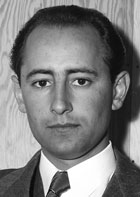
Jack went to work full-time at the Hercules Powder Company, a former division of DuPont which had been separated to avoid an anti-trust lawsuit. He had actually been working there at weekends and on holidays for some time, but now he was a permanent employee they assigned him to a manufacturing plant in San Francisco. He earned a pretty good wage (due to the skill requirements and danger of the work), but constantly suffered from “bang-head”, the headache caused by absorbing nitroglycerine through the skin. He and Ed still hoped to get into rocketry, however, and frequented lectures at Caltech where in 1935 they met a postgraduate student named Frank Malina. Frank persuaded Theodore von Karman, his doctoral advisor, to let them use the Caltech facilities to try to develop a rocket that could lift scientific apparatus to sub-orbital levels, and the three men formed a partnership that became a friendship. Jack and Ed had practical experience, while Frank had scientific discipline and methodology. Frank was also a science fiction fan, as well as being (like the other two) well to the left politically. Jack did have a life outside the rocketry lab, however. In April 1935 he was married.
Jack met Helen at a church dance the year before. Helen’s mother was a Swedish emigrant named Olga Nelson who had married an Englishman named Thomas Cowley. He had died in 1920 when Helen was nine years old, and Olga had remarried to a man named Burton Northrup. Though her three daughters from her first marriage had taken Northrup’s name their marriage had been far from happy. He was reportedly abusive towards the girls, including his own two daughters with Olga, and was imprisoned for financial fraud in 1928. With her turbulent home life, Helen jumped at Jack’s marriage proposal as a means of escape. To support her he took a job at the Halifax Powder company, though she was unhappy with how much of his wages he spent on rocketry research materials.
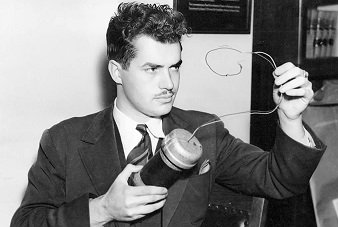
The research continued apace, and the group’s numbers began to grow. Their official title was the GALCIT Rocket Research Group, [1] but the explosions their work often entailed soon earned them a different nickname – the “Suicide Squad”. They did win respect from the university administration when they were able to demonstrate a stable rocket engine prototype. Jack also gained some fame outside of academia when he served as an expert witness in the prosecution of LAPD Captain Earl Kynette. Someone had tried to murder a private detective named Harry Raymond with a car bomb. Raymond was investigating claims of corruption within the LAPD, and Kynette was the head of a private secret unit within the force that the mayor of Los Angeles used to dig up dirt on his enemies. Jack was able to reconstruct the car bomb used in the assassination attempt, and show that it matched the testimony of a witness who pinned the blame on Kynette’s men. As a result Kynette was convicted, and Mayor Shaw wound up being hounded from office.
1939 was a momentous year in Jack’s life, for multiple reasons. The first was the outbreak of war in Europe, which immediately led to an influx of military funding for research into rockets. The second was the arrival in his house of his wife’s fifteen year old half-sister, Sara. Jack and Helen had subdivided their house into several sets of apartments, and Sara took one of these. The third was Jack’s discovery of Thelema – the gnostic religion founded by Aleister Crowley and ran through Ordo Templi Orientis, the OTO. The Los Angeles branch of the church was run by Wilfred Talbot Smith, a long term associate of Crowley’s. He was impressed by Parsons, and told Crowley in a letter that he had “an excellent mind and much better intellect than myself”. Parsons was somewhat more dubious, but the ideas behind Thelema intrigued him, especially with his (slightly shaky) knowledge of quantum physics. He and Helen joined the lodge in 1941, along with Sara and a young grad student named Grady McMurtry. [2]
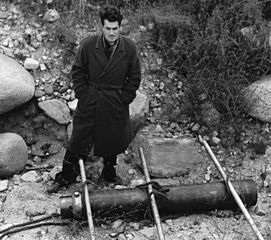
The war impetus to the GALCIT group, and they rebranded their research as being into “jet propulsion” to avoid the science fiction connotations of rocketry. Their first proposal was for using a rocket engine to boost an aircraft’s speed so that it could take off on a shorter runway (such as an aircraft carrier) in what became known as Jet-Assisted Take Off, or JATO. The development of the JATO rockets took several years, and reportedly a quarter of the group’s funding went on repairing the damage they did to Caltech’s buildings during experimentation. The key issue (as would become a running theme in rocket research) was the fuel. [3] The best they could come up with was a mixture of gasoline and liquid oxygen, but it was hellishly unstable. Eventually Parsons had the idea of replacing liquid oxygen with a mixture of chemicals generally known as “Red Fuming Nitric Acid”, while Frank Malina suggested replacing the gasoline with aniline, a highly flammable chemical primarily used as a blue dye. In order to commercialise this invention, the GALCIT group formed the Aerojet Engineering Corporation (with Jack as one of the five founding stakeholders). The corporation is still in operation (as Aerojet Rocketdyne) today.
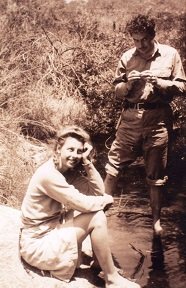
Jack’s personal life became a lot more complicated in late 1941 when Helen went off on a trip, and returned to find that he had taken up with Sara. Sara was only seventeen at this time (which made their relationship illegal under Californian law) but she had been sexually active for several years and probably was the one who initiated the relationship. She definitely made her feelings clear by wearing Helen’s clothes and referring to herself as “Jack’s new wife” (as well as taking on the name “Betty”, for unclear reasons). Thelema encouraged this sort of fluidity in relationships, regarding static partnerships as stagnant, but Helen never forgave her sister or Jack. She began an affair with Wilfred Talbot Smith, possibly in retaliation, and had a baby in 1943 that legally bore the Parsons name, but was almost certainly Smith’s child. The resulting tensions led to most of the Californian OTO Lodge turning against Sara, and Crowley decided (based on letters, as he never met her) that she was “an elemental or demon in the form of a woman” sent to disrupt the church. Given later developments, he may have been on to something. His government ties led to the Lodge being investigated by the FBI as a potential security threat, though they decided it was harmless. Meanwhile Smith’s relationship with Crowley became more strained, and eventually Crowley ordered him to step down as head of the Lodge, ostensibly to take a meditative retreat and develop his magical powers. Rather than comply Smith resigned from the OTO. In his absence Jack, who had been one of his staunchest defenders, was appointed as head of the lodge.
Jack’s growing occult status was not without its downsides. In 1944, facing increased demand from the military, the Aerojet founders decided that they should sell a controlling interest to the General Tire and Rubber Company, who had the facilities needed. One of the conditions of the deal that the other founders, including Jack Malina, insisted on was that Jack Parsons and Ed Forman would have to sell out their stake entirely. Quite apart from his scandalous OTO ties, Jack’s lack of regard for safety protocol was seen as unsuitable for a professional environment. Andrew Haley, Aerojet’s company lawyer and a neighbour of Jack’s, was able to persuade him to sell up. This also ended his association with GALCIT (by now renamed JPL, the Jet Propulsion Laboratory). Instead Jack and Ed set up their own company, Ad Astra Engineering. [4] They took the name from their childhood motto, “per aspera ad astra” – “through hardship to the stars”.

As the war ended, changes came to the Californian Lodge. Wilfred Smith returned from his retreat, and he, Helen and Jack agreed that she would divorce Jack. The Lodge’s numbers dwindled, and Jack once again began renting rooms in his sprawling house (known as the Parsonage) to non-members. The sole criteria was that you be someone Jack found “interesting”, and the tenants included actors, singers and science fiction writers. One of those was a Navy lieutenant on leave named Lafayette Ronald Hubbard. [5] Jack took an immediate liking to Hubbard when they were introduced, and offered him a room in the Parsonage. Hubbard took the offer, though Jack may have regretted it when Sara Northrup immediately broke off their sexual relationship and began one with Hubbard instead. This put some strain on matters in the household, but Jack found Hubbard too fascinating to make much of a fuss. He had decided that he needed a partner of unparalleled magical ability, as he was about to attempt a major feat of Thelemic magic. He was going to try to summon a goddess.
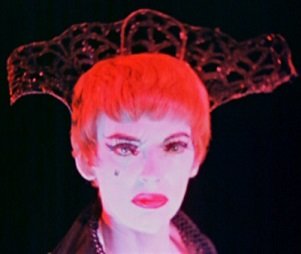
Babalon, the Scarlet Woman, is one of the central figures of the Thelemic religion. She combines aspects of a mother goddess and a fertility goddess, and one ultimate feat for a Thelemic magician is to impregnate the goddess with himself, and have her give birth to his new self as a magical being. In early 1946 Jack and Hubbard went out into the desert to summon the spirit of Babalon to Earth, to place it within the soul of an elemental woman, and to draw her to Jack as his Scarlet Woman, his magical and sexual partner. When a red-haired artist named Marjorie Cameron arrived as a guest at the Parsonage shortly after the Working was completed, Jack was convinced that his magic had worked. She was unaware of his magical reasons for approaching her, but she was attracted to him and the two began a relationship. Ironically, given that Jack and Hubbard were working to try to have her conceive a child that they believed would contain Jack’s soul, when she discovered that she was pregnant she didn’t tell Jack but instead flew to Paris and had an abortion.
While Marjorie was abroad, Hubbard and Sara approached Jack with a business deal. He had bought the lease to the Parsonage in 1944 with his buyout money, and had recently sold it to developers for twice what he had paid for it. They suggested that he invest the money in their new venture, which was to buy three yachts in Miami and sail them through Panama to the West Coast and resell them. Against the advice of many of his friends, Jack gave them the money. When Crowley found out, he sent him a telegram telling him that he was clearly being conned, and Jack finally wised up. By now it was too late – the pair had bought one yacht in Miami and absconded with the rest of the cash. Hubbard, who was on inactive service for medical reasons, had already received permission from the Navy to go on a “round the world cruise”. When they were forced back to port by a storm, Jack was convinced it was due to a curse he had placed on them. He took the pair to court, and Hubbard was ordered to pay back Jack’s investment. His plans to place criminal charges were blocked by Sara, who threatened to have him charged with statutory rape for having begun their relationship when she was 17. In the end Jack only received a partial settlement from Hubbard. [6]
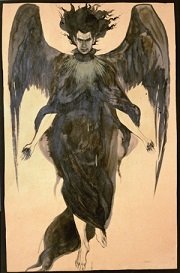
The crisis had two major effects on Jack’s life. Firstly it effectively ended his membership in OTO, and indeed killed off the OTO lodge in California itself. He did maintain a friendly correspondence with Crowley until the old man died the following year. Secondly, it deepened his relationship with Marjorie Cameron. Reportedly she tried to cheer him up by giving him a painting of Sara Northrup with her legs severed. This may have worked. The pair were married in October 1946, shortly after Jack’s divorce from Helen was finalised.
Jack was one of many whose career suffered in the post-war “Red Scare” climate of paranoia about communist agents. While he had never officially joined any communist organisations, his OTO activities were considered to be a potential ground for blackmail. His security clearance was revoked, leaving him unable to work in rocketry. Though he fought to have it reinstated and initially succeeded, he was forced out of the industry and faced potential espionage charges. He supported himself through low-level engineering work, as well as some less than legal production of explosives. The stress affected his marriage, and Marjorie went on a break to Mexico. While she was gone Jack began a series of magical workings involving prostitutes, hoping to find a new direction to his life. As a result he had several visions, and wrote a great deal of occult material that was not published during his lifetime.
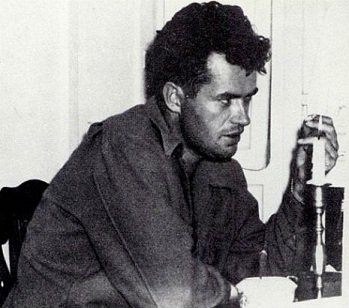
Jack became a fixture of the growing Los Angeles underground scene, a genuine “mad genius” who brewed his own absinthe and was too far out for the establishment to handle. When he was eventually barred from all classified research in 1952, his new Hollywood connections gave him a new source of income – producing special effects explosives for the film industry. It was a decent source of income, but he still dreamed of rockets. Marjorie returned to LA, and the two hatched a plan. Jack had a job offer in Mexico to set up an explosives factory for the Mexican government, and they thought this would be a good staging point for emigrating to Israel, where Jack could resume his work in rockets. June 18th, 1952 was the date they set for their departure. The day before, tragedy struck.
To raise some travelling money Jack took on a rush order of explosives for a movie set. While he was working there was an explosion, and he was mortally wounded. Jack was still alive when the ambulance arrived, but less than forty-five minutes after the explosion he was dead. Marjorie was by his side, and she reported his last words as “Who will take care of me now?” It was a double tragedy – when his mother heard of the death of her only child she took her own life. Marjorie was convinced that Jack had been murdered by the government in order to prevent him taking his knowledge abroad, though the official verdict was that he dropped some mercury fulminate and set off a chain reaction. Some biographers think it might have been deliberate, with Jack convinced that he had lost his rockets forever. We’ll probably never know.
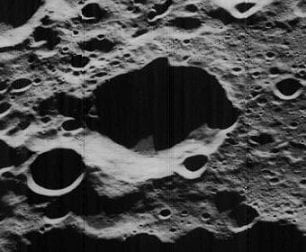
Jack was cremated in a private ceremony, but the (largely defunct) OTO lodge also held a memorial for its former leader. Wilfred Smith officiated, and both Helen and Sara attended. Marjorie never really got over his death, and for the rest of her life workd to publish his works and keep his memory alive in the occult community. His scientific legacy was generally understated and dismissed, due to the embarrassment caused by his notoriety, until 1968 when Frank Malina gave a speech that “rehabilitated” him, restoring him the credit he deserved. In 1972 a crater on the Moon was given his name as a permanent memorial. Though Jack Parsons didn’t live to see his inventions help pave the way for man into space, he thus lives on beyond the Earth we know.
Images via wikimedia except where stated. Banner via Rune Soup.
[1] Guggenheim Astronomical Laboratory at the California Institute of Technology.
[2] McMurtry joined the US army and wound up stationed in England during the war, where he became a personal student of Crowley. Eventually he would be responsible for reviving OTO in 1971 in the form that survives to this day.
[3] For an amazing history of the chemistry of rocket fuel development, I heartily recommend Ignition! by John Drury Clark, available for free online.
[4] No relation to the modern rocketry company of the same name.
[5] At this point I should probably state that the official position of the Church of Scientology is that all of Hubbard’s interactions with Jack Parsons were part of a US Navy deep cover operation to uncover a spy ring operating within California’s occult circles. There is no evidence to back this up, but of course if it was a deep cover operation there wouldn’t be, would there?
[6] Hubbard and Sara continued their relationship, and were eventually married at Hubbard’s insistence. It was an incredibly unhappy marriage for multiple reasons, and dissolved in a gigantic mess (involving kidnapping, accusations to the FBI of communist sympathies and death threats) in 1951. Hubbard in later life denied that the marriage had ever taken place and insisted that Sara’s daughter Alexis was not his. He also claimed Sara had been a Nazi spy during the war and her relationship with him was part of a vast overreaching plot. The official position of the Church of Scientology (who Sara described as “Mormons with bad complexions”) is that Sara was a Russian spy.
